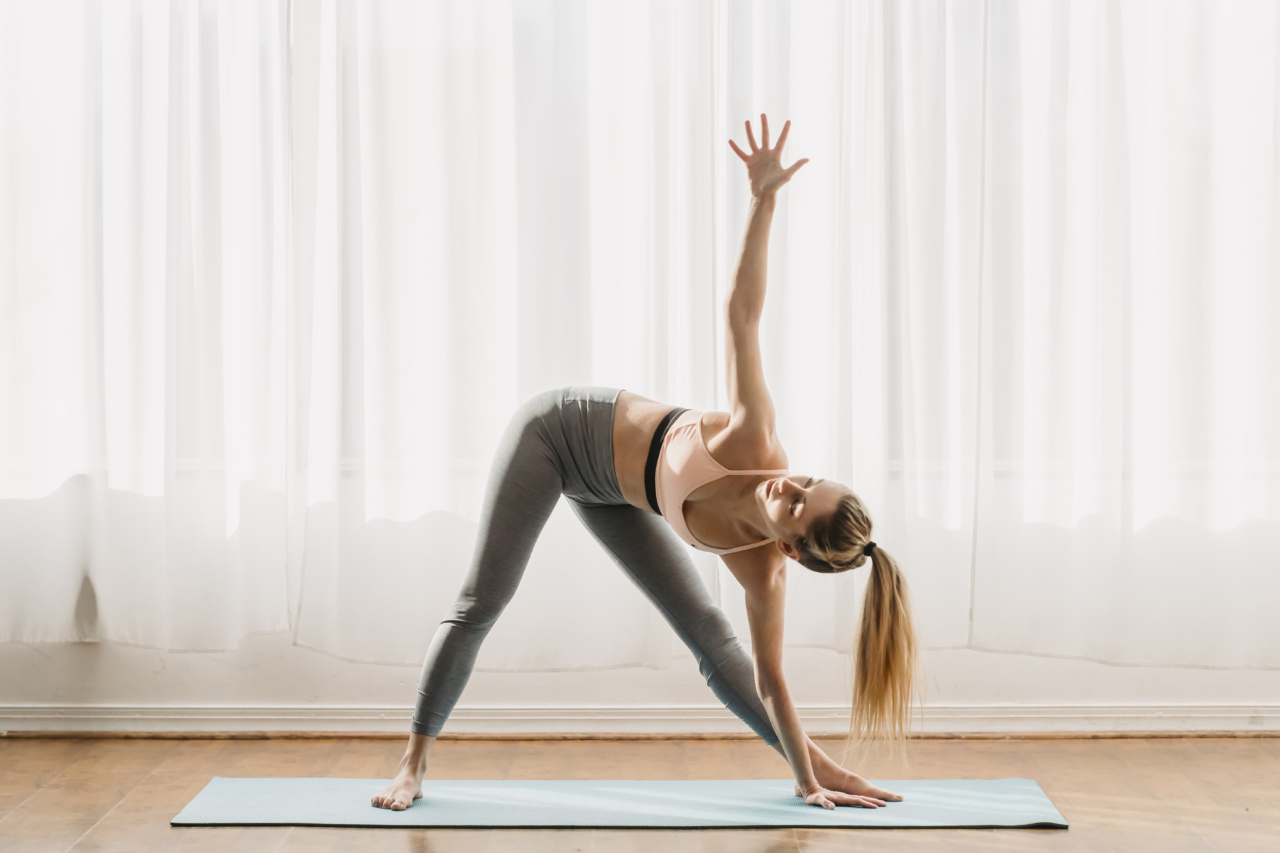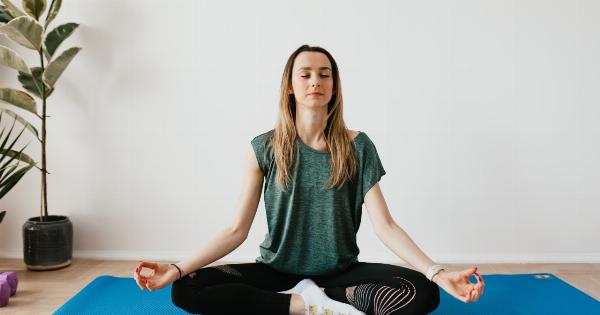Yoga has long been recognized for its ability to promote relaxation and improve mental wellness. By combining physical postures, controlled breathing, and meditation, a regular yoga practice can help calm the mind and reduce stress.
While many people choose to attend yoga classes at studios or gyms, others prefer the convenience and privacy of practicing at home. In this article, we will explore how you can create a peaceful environment and establish a home yoga practice to calm your mind.
The Benefits of Yoga for Stress Relief
Before diving into the steps to establish a home yoga practice, let’s first understand the benefits of yoga for stress relief. Research has shown that regular yoga practice can:.
- Reduce cortisol levels: Cortisol is known as the stress hormone, and high levels of it can lead to anxiety and mood disorders. Yoga helps to lower cortisol levels, promoting a sense of calmness and relaxation.
- Increase GABA levels: Gamma-aminobutyric acid (GABA) is a neurotransmitter that helps regulate anxiety. Yoga has been found to increase GABA levels, reducing anxiety symptoms.
- Promote mindfulness: Yoga encourages mindfulness, which involves focusing on the present moment without judgment. This practice can help quiet the mind, reduce rumination, and improve overall mental well-being.
- Enhance sleep quality: Practicing yoga regularly can improve sleep quality and quantity. Better sleep contributes to a calmer mind and improved stress management.
- Boost mood: Yoga stimulates the release of endorphins, the hormones responsible for feelings of happiness and well-being. Regular practice can help alleviate symptoms of depression and enhance mood.
Creating a Peaceful Environment
Before beginning your home yoga practice, it’s important to create a peaceful environment that allows you to fully immerse yourself in the experience. Here are a few tips:.
- Choose a quiet space: Find a room or corner in your home where you can practice without distractions. This could be a spare room, a quiet corner of your bedroom, or even your living room.
- Clear the clutter: Remove any unnecessary items from the space to create a clean and calming atmosphere. Consider adding a plant or two to bring a touch of nature indoors.
- Set the mood: Dim the lights or use soft lighting to create a soothing ambiance. You can also play gentle instrumental music or nature sounds in the background to enhance relaxation.
- Use aromatherapy: Consider using essential oils or incense with calming scents like lavender, chamomile, or sandalwood. These scents can help create a serene atmosphere and promote relaxation.
Steps to Establish a Home Yoga Practice
Now that you have set up a tranquil space, it’s time to establish your home yoga practice. Follow these steps to get started:.
1. Set a regular schedule
Consistency is key when it comes to establishing a home yoga practice. Set aside specific times each week for your practice and treat them as non-negotiable appointments with yourself.
This will help you stay committed to your practice and make it a priority.
2. Gather your yoga props
Depending on your preferred style of yoga, you may need a few props to support your practice. Common props include a yoga mat, blocks, straps, and bolsters. Gather the necessary props and have them ready in your practice space.
3. Choose a suitable yoga style
Explore different styles of yoga and choose the one that resonates with you the most. Some styles that are particularly beneficial for calming the mind include Hatha, Yin, and Restorative yoga.
Experiment with different classes or online videos until you find a style that suits your needs.
4. Start with beginner-friendly routines
If you are new to yoga, it’s important to start with beginner-friendly routines. Look for online videos or tutorials specifically designed for beginners.
These routines will guide you through basic poses and breathing techniques, gradually building your strength and flexibility.
5. Focus on breathwork
Breathwork, or pranayama, is an essential aspect of yoga practice. Incorporate deep, slow, and controlled breathing into your routines.
The breath is intimately connected to the mind, and conscious breathing can help soothe racing thoughts and induce relaxation.
6. Practice mindfulness and meditation
Incorporate mindfulness and meditation into your yoga practice to enhance the calming effects.
Dedicate a few minutes at the beginning or end of each session to sit quietly, observe your thoughts without judgment, and focus on the sensations in your body.
7. Listen to your body
Remember that yoga is a personal practice, and it’s essential to listen to your body’s needs. If a particular pose feels uncomfortable or painful, modify it or skip it altogether.
Respect your body’s limitations and never push yourself beyond your capabilities.
8. Seek guidance from online resources
If you prefer practicing alone at home, there are numerous online resources available to guide you. Look for reputable websites or yoga apps that offer instructional videos and classes for all levels.
These resources can provide inspiration, proper alignment cues, and diverse routines to keep your practice interesting.
9. Stay patient and compassionate
Building a home yoga practice takes time and patience. Be kind to yourself and embrace the process. Some days you may feel more energetic and flexible, while other days you may need a more gentle practice.
Listen to your body and adapt your practice accordingly.
10. Reflect and journal
After each yoga session, take a few moments to reflect on your experience. Consider jotting down your thoughts, feelings, and any observations in a journal.
This reflective practice can help deepen the connection between your mind and body, and it allows you to track your progress over time.
Conclusion
A home yoga practice can be a powerful tool to calm your mind and promote overall well-being.
By creating a peaceful environment, setting a regular schedule, and following the steps outlined in this article, you can establish a home yoga practice that nourishes your body, mind, and soul. Remember, consistency and self-compassion are key on this transformative journey.






























